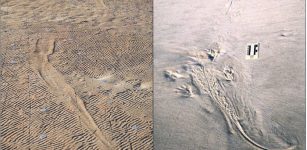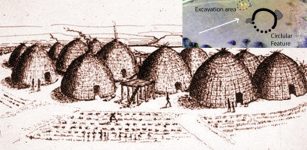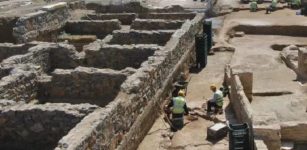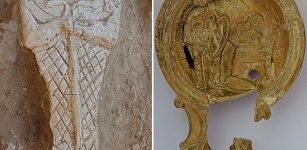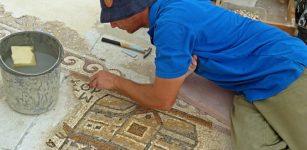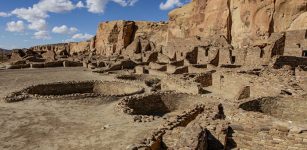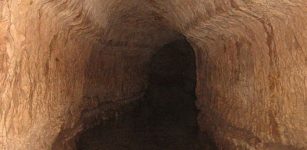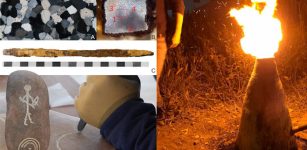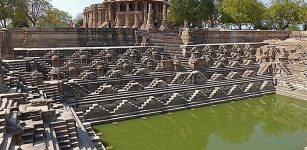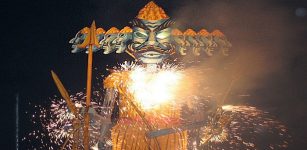Subterranean Structure In Medieval Naryn-Kala Citadel: Was It The Christian Temple?
Conny Waters - AncientPages.com - Using non-invasively muon radiography, nuclear physicists in Russia may have just detected one of the oldest Christian churches in the world.
This hidden subterranean structure is located in the medieval fortress of Naryn-Kala, in the ancient city of Derbent
 View from the top of the mystery building in Naryn-Kala. Image credit: NUST MISIS
View from the top of the mystery building in Naryn-Kala. Image credit: NUST MISIS
NUST MISIS scientists worked in cooperation with colleagues from the P.N. Lebedev Physical Institute of the Russian Academy of Sciences and Dagestan State University, and their method has already proven its effectiveness in discovery of a hidden room in the Pyramid of Cheops. It was also applied to an ancient structure located in the territory of the Derbent Naryn-Kala fortress, as Alevtina Chernikova, a leading expert and rector of NUST MISIS, informed.
The method helps to create an image of the buried structure and gives better ideas of its former use, and allows to ‘illuminate’ object with a size of a few meters to two kilometers. The 12-meter section is almost completely hidden underground, and only a piece of a dilapidated dome is visible from the surface.
The structure dates back to around the year 300 A.D. Until recently, people in the area believed this was just an underground reservoir. However, recent archaeological research suggests this structure is the oldest Christian Temple in modern-day Russian.
The Arabs controlled much of this area after their capture of Derbent (around 700 A.D.). Experts believe this to be a Christian Temple due to the cross-section of the building, traces of immured entrances, and the location of the structure’s walls.
Not all archaeologists agree with the last interpretation. It is difficult to settle their dispute with traditional methods because the Naryn-Kala fortress is a UNESCO cultural heritage site. It is not clear how the walls of the building, which have been exposed to water for quite long, will act when taken from the ground.
"It seems very strange to me to interpret this building as a water tank. In the same fortress of Naryn-Kala, there is an equal underground structure of 10 meters depth, and it really is a tank. This is just a rectangular building.
“The unusual building, in which we have put our detectors, has the shape of a cross, oriented strictly to the sides of the world, one side is 2 meters longer than the others,” the head of the scientific group, Ph.D. in Physics and Mathematics, NUST MISIS leading expert Natalia Polukhina, said in a press release.
“As the archaeologists who began excavations say, during construction, the building was entirely on the surface and it stands on the highest point of the Naryn-Kala. What is the sense to put the tank on the surface, and even on the highest mountain? It is strange. Currently, there are more questions than answers."
Already in the first test experiment, physicists "saw" an unusual distribution of muon fluxes in the western wing of the building, which may be related to the architectural features, indistinguishable by fragments of walls located above ground.
The construction, built of local shell-limestone, is about 11 meters high and extends 15 meters from south to north and 13.4 meters from west to east. Segments (arm) of a cruciform design have a width of about 5 meters, three arms of a length of about 4.2 m, and the fourth (northern) - more than 6 meters. The brackets are covered with vaults, and a dome wire frame with a diameter of 5 meters is located above the central part.
A number of historical and reference sources, this construction is referred to as an underground water reservoir, as it was in the 17th - 18th centuries. However, there are certain doubts regarding this hypothesis. The main reasons for the interpretation of this building as the original religious building were the unusual for reservoirs, but common for early churches and fire temples cross shape of the building and its orientation to the sides of the world.
The main result of the next stage of the experiments will be the final three-dimensional tomogram of the underground building, which will help to define the purpose of this unusual facility.
Written by Conny Waters - AncientPages.com Staff Writer



